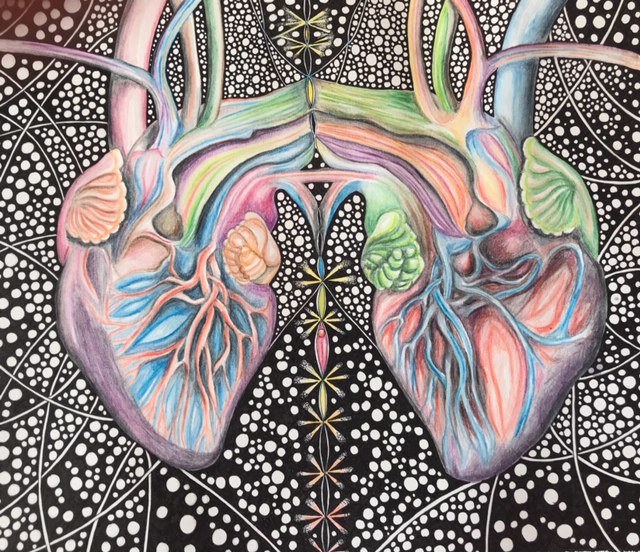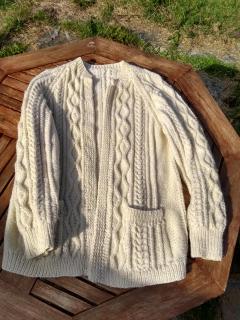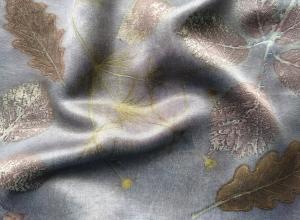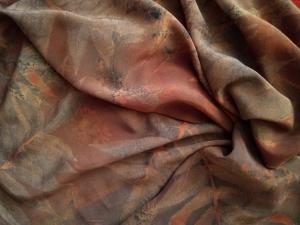On the CIEP forums, we recently asked members if they’d like to share their crafting skills, and had a fabulous response – this is Part 1 of our crafty editors series!
Sarah Perkins
Here is Pugin, my firescreen.
 I saw a beautiful glass peacock firescreen. I loved it, but it was far too small and delicate for my fireplace, and very expensive. It got me thinking that I could make something three dimensional, so I didn’t need the traditional frame to make it stand upright. Apart from the peacock blue felt, he was made from various scraps, in different techniques so I didn’t get bored or run out of a material I couldn’t find again. There’s knitting, patchwork, quilting, drawn thread work, crewel embroidery, ribbon weaving, needle lace, felting, machine embroidery, and even a bit of fair trade raffia. You wouldn’t believe how many people have asked me why I don’t call him Penelope. Because he is a peacock. Ah!
I saw a beautiful glass peacock firescreen. I loved it, but it was far too small and delicate for my fireplace, and very expensive. It got me thinking that I could make something three dimensional, so I didn’t need the traditional frame to make it stand upright. Apart from the peacock blue felt, he was made from various scraps, in different techniques so I didn’t get bored or run out of a material I couldn’t find again. There’s knitting, patchwork, quilting, drawn thread work, crewel embroidery, ribbon weaving, needle lace, felting, machine embroidery, and even a bit of fair trade raffia. You wouldn’t believe how many people have asked me why I don’t call him Penelope. Because he is a peacock. Ah!
Catherine Dunn
 I studied fine art at Loughborough University and graduated in 2001 with a BA in painting. Since then, I’ve continued to draw and paint as a hobby. I find it helps me zone out and relax. Due to space constraints, these days I keep it fairly small. This piece is in watercolour pencils and ink. I enjoy working in a wide range of media, but I always keep things mainly in two dimensions. I’ve recently started experimenting with ProCreate Pocket on my iPhone, which is opening up new avenues to me.
I studied fine art at Loughborough University and graduated in 2001 with a BA in painting. Since then, I’ve continued to draw and paint as a hobby. I find it helps me zone out and relax. Due to space constraints, these days I keep it fairly small. This piece is in watercolour pencils and ink. I enjoy working in a wide range of media, but I always keep things mainly in two dimensions. I’ve recently started experimenting with ProCreate Pocket on my iPhone, which is opening up new avenues to me.
Joanna Porter
 I make lace, mainly bookmarks because they are relatively simple to do and still work even if the lace is not 100% perfect. I find it therapeutic as it is not that complicated to do but does require total concentration. Part of the pleasure also comes from using my grandmother’s bobbins. I hope to add a lace bookmark to the raffle at the 2021 CIEP conference.
I make lace, mainly bookmarks because they are relatively simple to do and still work even if the lace is not 100% perfect. I find it therapeutic as it is not that complicated to do but does require total concentration. Part of the pleasure also comes from using my grandmother’s bobbins. I hope to add a lace bookmark to the raffle at the 2021 CIEP conference.
Elaine Monaghan
I enjoy making botanical contact prints (sometimes known as ecoprints), mostly using leaves from my garden, or collected while on a walk. It’s a very personal way of making a permanent record of a moment in time. I generally print on protein fibres (silk, wool), which take prints well; cellulose fibres (cotton, linen, bamboo, etc.), including paper, can be trickier. The photos show two examples of printing on silk. The technique has great potential for upcycling favourite old garments that need a new look, and I’m working on incorporating prints into conventional garments (such as on a silk lining for a jacket).
One of the attractions of the technique is that each print is unique: the result of printing a leaf from an individual tree may vary, depending upon the season, and if weather conditions change. It’s encouraging that even the most experienced printers get unexpected results!
Caroline Petherick
 After a rather long break, I took up knitting again and kicked off with a nice warm woolly for winter.
After a rather long break, I took up knitting again and kicked off with a nice warm woolly for winter.
Paul Sensecall
 In my spare time, I produce abstract works on canvas using natural coloured mica pigments mixed with resin and hardener. The resin sets to a hard clear vitreous finish, giving interesting light-diffracting qualities to the pigments on the canvas. I use a mixture of techniques to add and disperse the pigments and resin across the canvas and to introduce cells and lacing effects.
In my spare time, I produce abstract works on canvas using natural coloured mica pigments mixed with resin and hardener. The resin sets to a hard clear vitreous finish, giving interesting light-diffracting qualities to the pigments on the canvas. I use a mixture of techniques to add and disperse the pigments and resin across the canvas and to introduce cells and lacing effects.
Proofread by Joanne Heath, Professional Member.
 Stitched together and posted by Abi Saffrey, CIEP blog coordinator.
Stitched together and posted by Abi Saffrey, CIEP blog coordinator.
The views expressed here do not necessarily reflect those of the CIEP.


